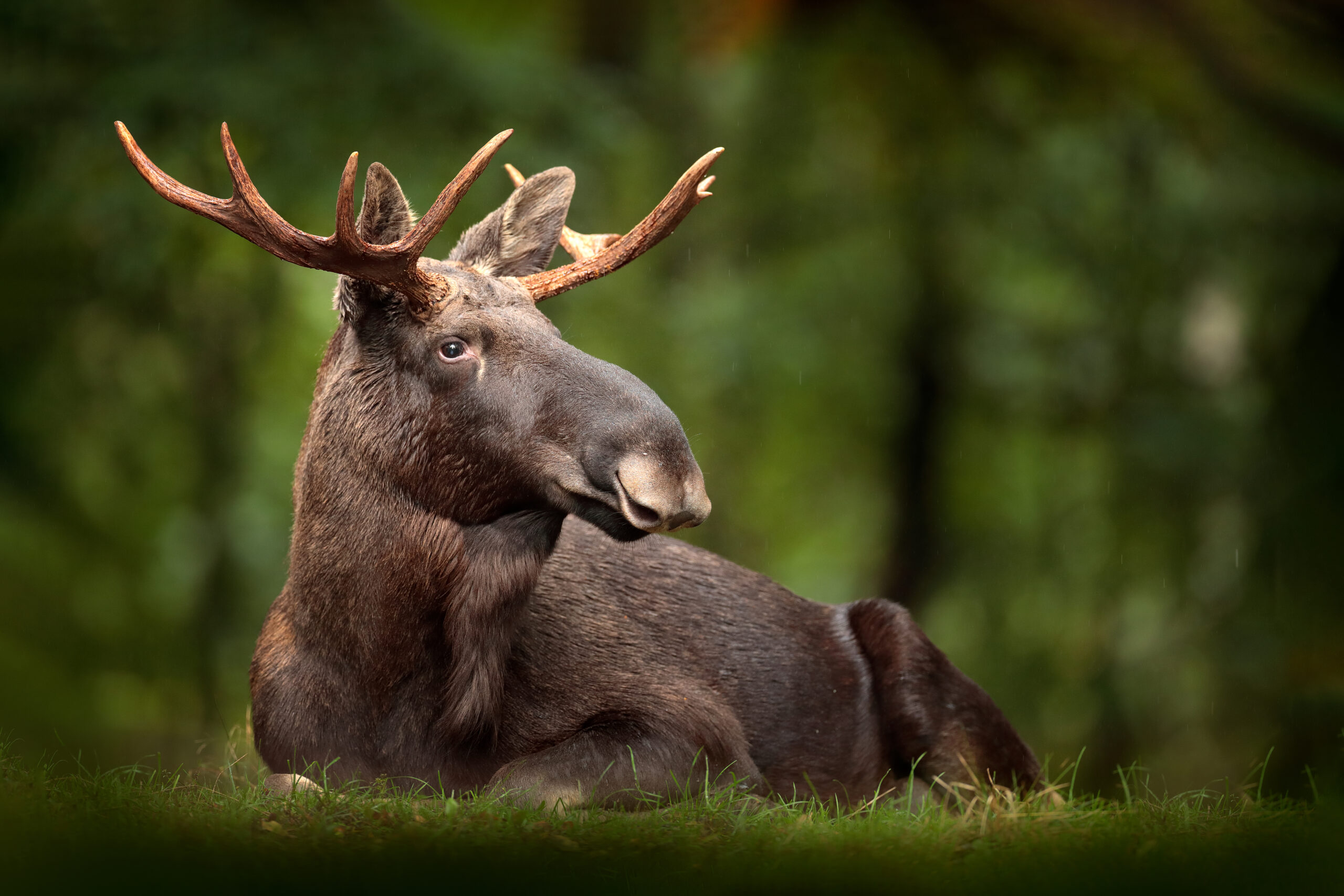The majestic elk, renowned for its impressive antlers and robust physique, is a sight to behold in the wild. While elk once roamed across North America, their populations are now concentrated in certain areas, particularly in specific U.S. states.
This list explores the U.S. states where elk populations are most prevalent. Each state offers unique habitats and conservation efforts that contribute to sustaining these magnificent creatures.
Whether you’re an enthusiastic wildlife observer or a casual nature lover, understanding where you can find abundant elk herds adds a fascinating layer to your exploration of natural wonders. Here, we take a closer look at the states that boast the largest elk populations.
1. Colorado
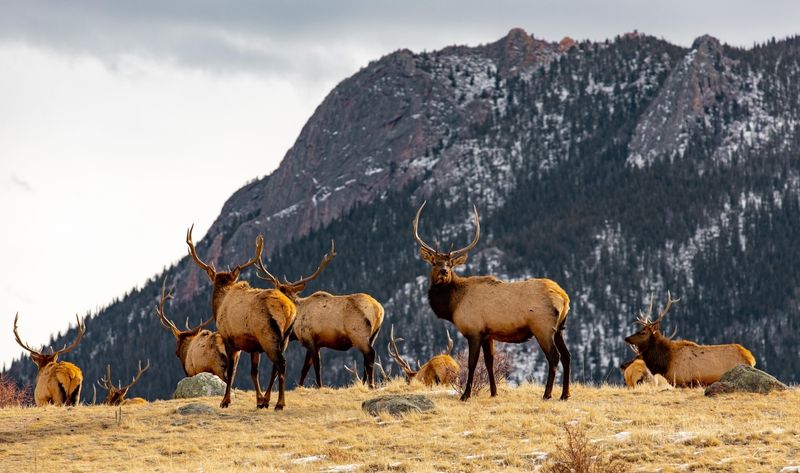
Colorado is home to the largest elk population in the United States, boasting an impressive number of these majestic creatures. The state’s diverse terrain, ranging from vast plains to rugged mountains, provides ideal habitats for elk.
In particular, the Rocky Mountain National Park is a notable area where you can watch elk (and other incredible animals) thrive, drawing visitors from all over to witness their grandeur. The state’s conservation efforts have played a crucial role in maintaining and increasing the elk population.
Programs focused on habitat preservation and sustainable management practices ensure that elk herds continue to flourish. Additionally, Colorado’s hunting regulations are carefully crafted to balance wildlife conservation with recreational opportunities for hunters.
During the fall, the annual elk rut is a spectacular event, attracting wildlife enthusiasts and photographers who wish to capture the mesmerizing sight of bull elk engaging in fierce battles for dominance. Whatever the season, Colorado offers plentiful opportunities to observe elk in their natural surroundings.
2. Oregon
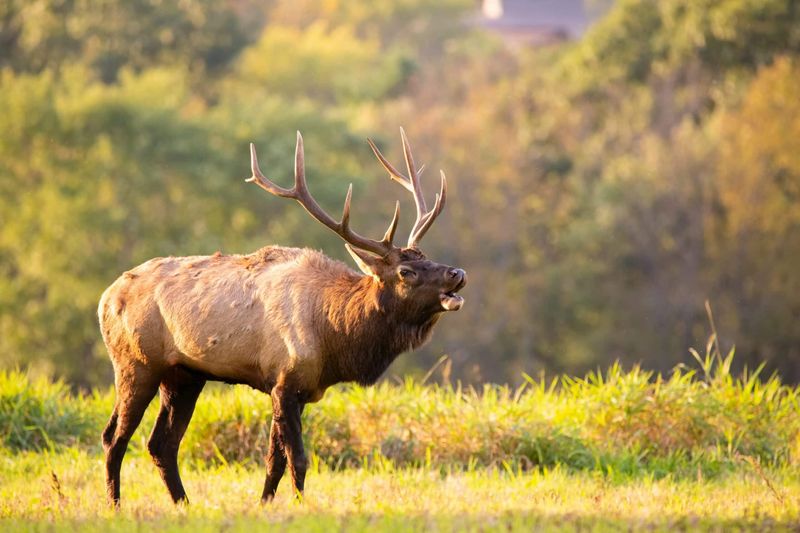
Oregon’s elk population thrives in its lush forests and expansive meadows, providing a picturesque setting for these graceful animals.
The state features both Roosevelt and Rocky Mountain elk, with Roosevelt elk primarily found in the coastal ranges and Rocky Mountain elk inhabiting the eastern regions. Oregon’s diverse ecosystems, from rainforests to high desert, offer varied habitats that support healthy elk populations.
State wildlife agencies actively engage in conservation efforts, emphasizing habitat restoration and protection to ensure the sustainability of elk herds. Wildlife enthusiasts visiting Oregon can often see elk in areas like the Cascade Range or along the coast.
The state’s commitment to preserving its natural environment is evident in the flourishing elk populations, making it a prime destination for those looking to encounter these majestic creatures in their preferred habitats.
3. Montana
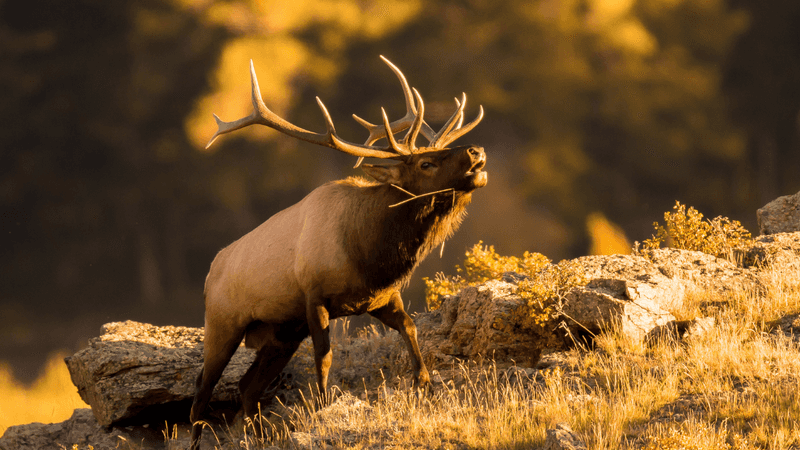
Montana is renowned for its broad landscapes and abundant wildlife, with elk being a significant part of this natural bounty. The state’s sweeping prairies and towering mountains create an ideal environment for elk populations to thrive. Elk can be found throughout Montana, but the Greater Yellowstone Ecosystem is particularly famous for its large herds. The state prioritizes wildlife management and conservation, ensuring that elk populations remain healthy and vibrant. In Montana, the hunting culture is strong, with regulations in place to maintain a balance between conservation and recreational hunting. The seasonal migrations of elk in the region present a unique opportunity for photographers and nature lovers to observe the animals in their natural habitat, making Montana a premier location for elk viewing.
4. Wyoming
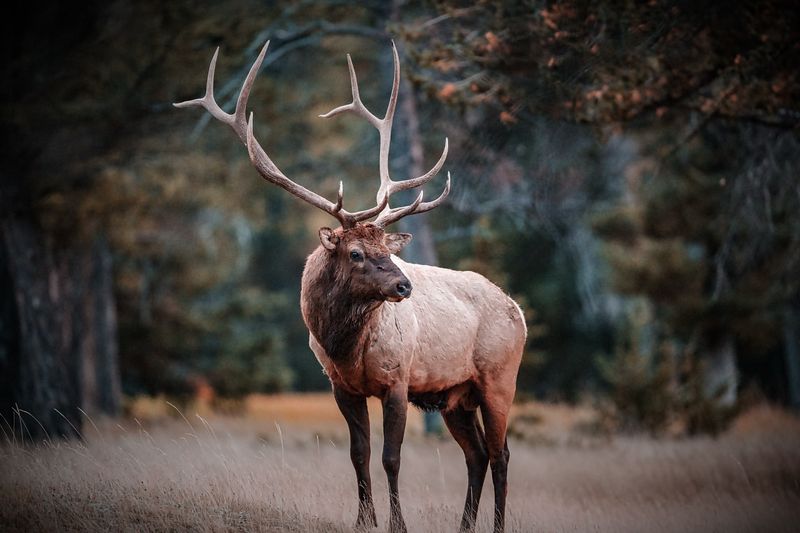
Wyoming offers a rugged landscape where elk herds thrive in vast open spaces and mountainous areas. The state is part of the Greater Yellowstone Ecosystem, a region renowned for its biodiversity, including significant elk populations.
Wyoming’s commitment to wildlife management is evident in its conservation programs aimed at sustaining elk numbers. Hunting is a popular activity, with regulations set to ensure the ecological balance and longevity of the herds.
The state provides numerous opportunities for wildlife enthusiasts to observe elk, particularly in national parks like Yellowstone and Grand Teton. Here, visitors can experience the natural beauty of Wyoming while witnessing elk in their native habitat, making it an excellent destination for those interested in wildlife and nature.
5. New Mexico
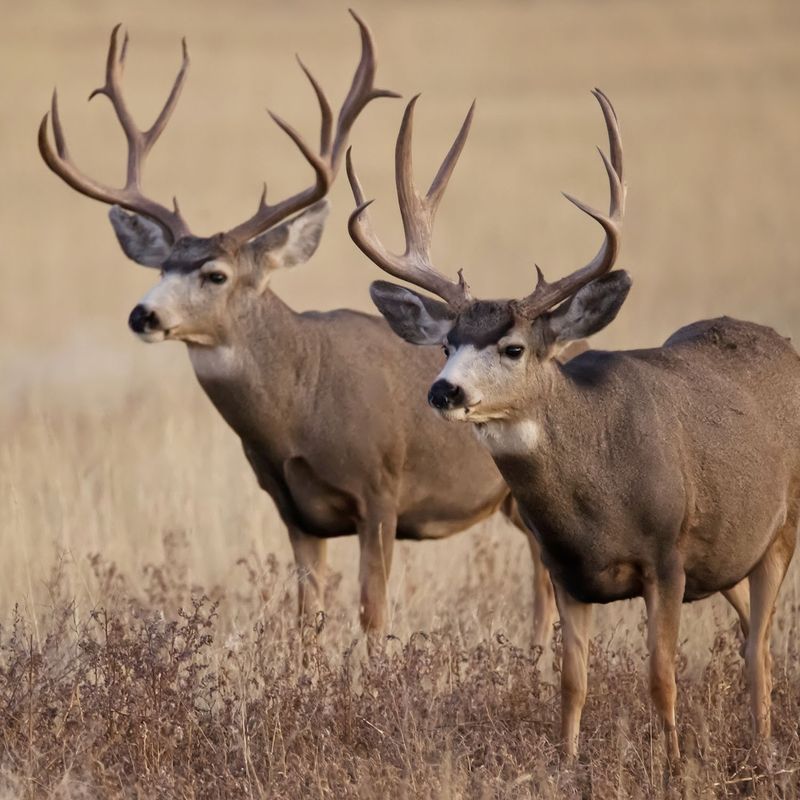
New Mexico might not be the first state that comes to mind when thinking of elk, but it harbors a substantial population across its varied landscapes. The state’s unique blend of arid desert and forested areas creates diverse habitats for these animals.
Conservation efforts in New Mexico focus on habitat enhancement and protection, ensuring that elk populations remain robust. The state implements strategic programs to manage wildlife, balancing the needs of elk with those of its human residents.
Elk viewing in New Mexico can be a rewarding experience, particularly in regions like the Gila National Forest, where they roam freely. This state’s commitment to wildlife conservation has not only preserved the elk numbers but also enriched the natural experience for visitors seeking to witness these majestic creatures.
6. Idaho
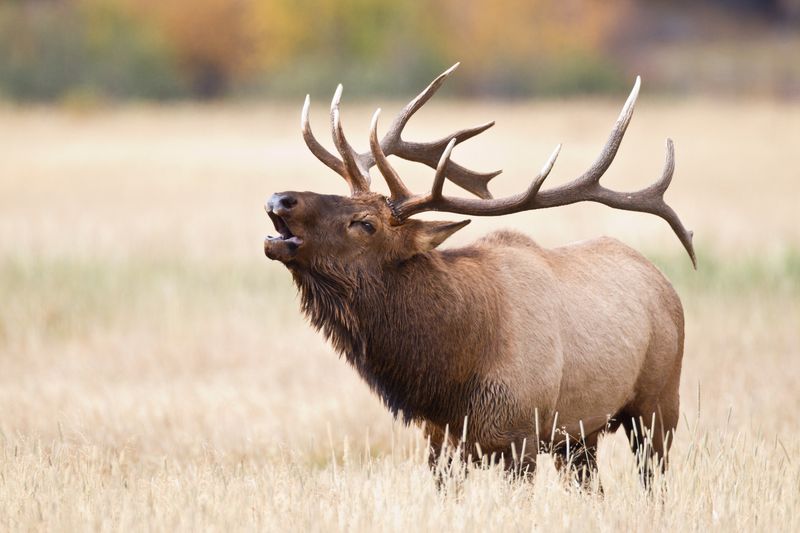
Idaho is a state that offers a pristine environment where elk populations thrive amidst rolling hills and lush forests. The state’s commitment to wildlife conservation has resulted in a healthy and growing elk population.
Elk are commonly found in Idaho’s remote wilderness areas, and the state’s diverse habitats provide perfect conditions for their sustenance. Conservation programs in Idaho focus on habitat management and monitoring elk numbers to ensure their long-term survival.
For wildlife enthusiasts, Idaho presents ample opportunities to observe elk in their natural setting. Whether exploring the Sawtooth Wilderness or other scenic areas, visitors are often rewarded with sightings of elk herds, making Idaho a favored destination for nature lovers and outdoor adventurers alike.
7. Utah
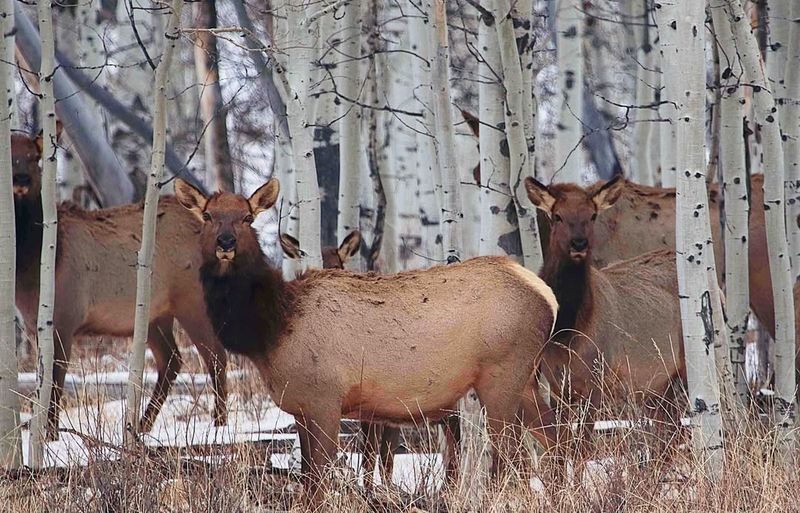
Utah’s varied landscape, from arid deserts to forested mountains, offers a unique habitat for elk, contributing to the state’s substantial elk population. The state is recognized for its effective wildlife management practices, ensuring sustainable elk numbers.
Elk are widely distributed across Utah, with significant populations found in areas like the Wasatch and Uinta mountains. The state actively engages in conservation and habitat restoration efforts, which are crucial for maintaining healthy elk herds.
Visitors to Utah have the chance to witness elk in their spacious and varied environments. Places such as the Fishlake National Forest offer prime elk viewing opportunities, attracting wildlife enthusiasts eager to experience Utah’s natural beauty and its thriving elk population.
8. Washington
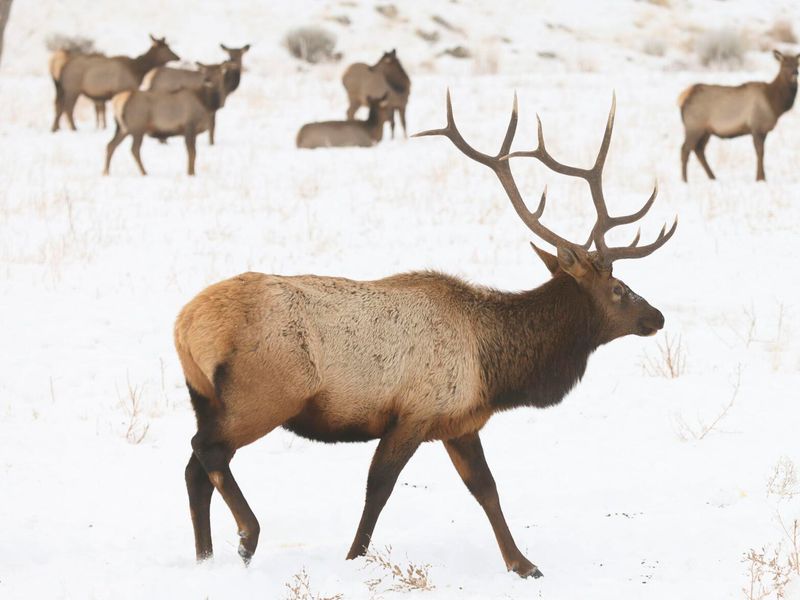
Washington’s rich natural environment, with its lush forests and river valleys, provides an ideal habitat for elk populations. The state is home to both Roosevelt and Rocky Mountain elk, each thriving in different regions.
Conservation efforts in Washington focus on habitat protection and management, ensuring that elk numbers remain stable and healthy. The state’s diverse environments support a wide range of wildlife, with elk being a prominent species.
The opportunity to see elk in Washington draws many nature enthusiasts, particularly in areas like the Olympic Peninsula and the Cascade Range. The state’s dedication to preserving its natural beauty makes it a favorable destination for those hoping to encounter elk in their natural habitats.
9. Pennsylvania
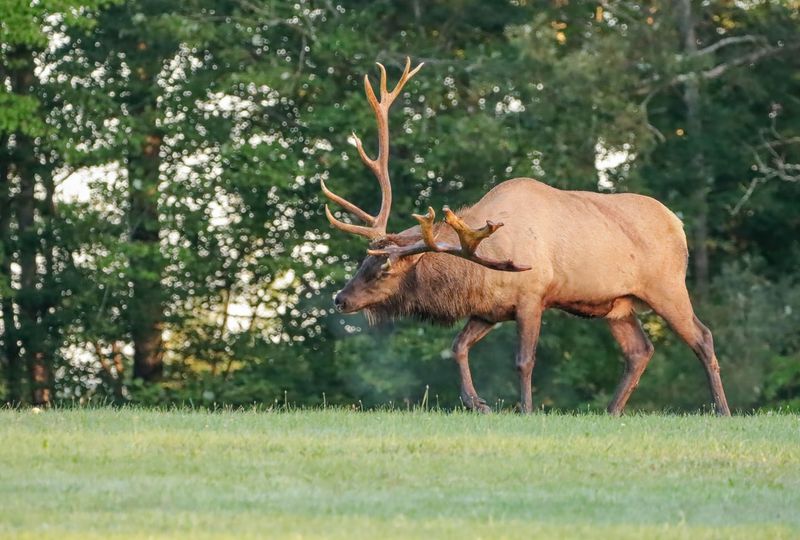
Pennsylvania stands out as an eastern state with a notable elk population, primarily found in the north-central region. The state’s successful reintroduction and conservation efforts have led to thriving elk numbers.
The Pennsylvania Game Commission has played a pivotal role in habitat management and public education, fostering a healthy environment for elk. This has turned the state into a prime example of successful wildlife restoration.
Visitors to Pennsylvania can explore areas like the Elk Country Visitor Center, where educational programs and viewing trails offer a chance to see elk up close. The state’s commitment to conserving its elk population provides a rich experience for anyone interested in wildlife and ecology.
10. Kentucky
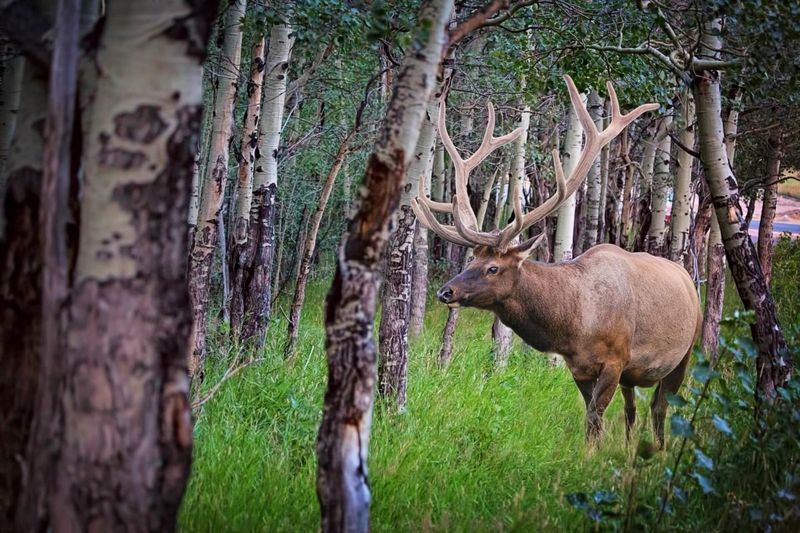
Kentucky’s elk population is a testament to successful conservation efforts, making it the eastern U.S. state with one of the largest elk herds.
The state’s rolling hills and woodlands provide a perfect backdrop for these majestic animals. Restoration programs in Kentucky have transformed former coal mining areas into thriving elk habitats. The state’s wildlife management strategies emphasize sustainable practices, contributing to the growth and health of the elk population.
For those interested in observing elk, Kentucky offers various opportunities, particularly in the southeastern regions. The state’s commitment to wildlife conservation and habitat restoration has not only benefited elk but also enriched Kentucky’s natural landscapes, providing visitors with a unique and rewarding experience.

